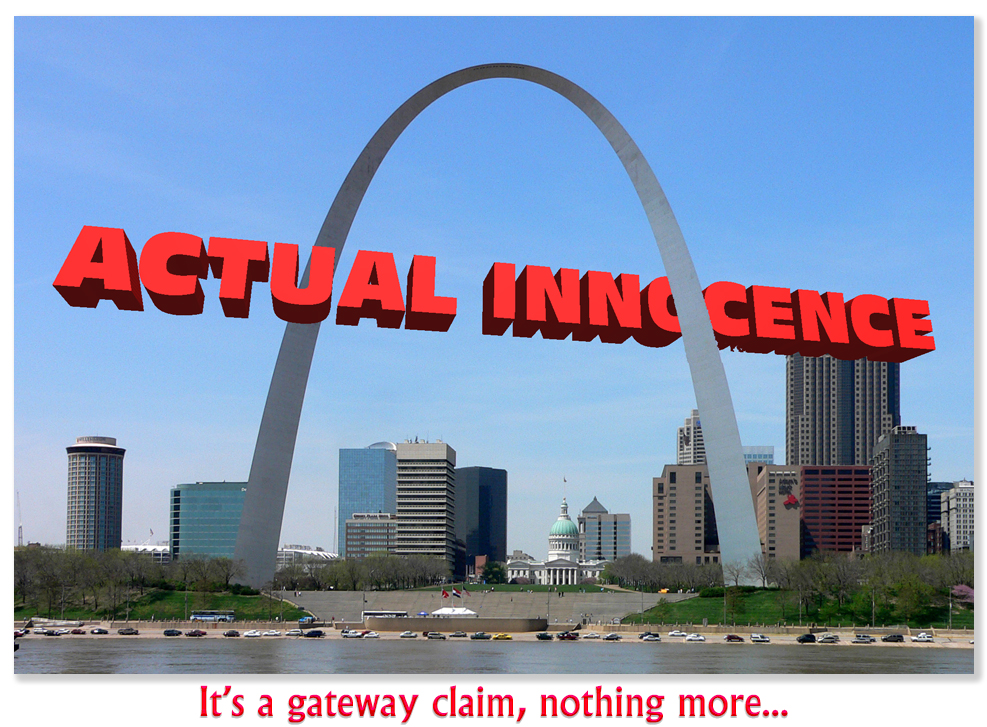We post news and comment on federal criminal justice issues, focused primarily on trial and post-conviction matters, legislative initiatives, and sentencing issues.

CONFUSING WISHES FOR FACTS
I had the unpleasant task last week of telling a parent that her daughter had no procedural means of attacking her 6-year old conviction and sentence. The mother replied, ”But there has to be a loophole! There’s always a loophole!”
 Loopholes are like the Tooth Fairy. They’re fun to believe in, and pretending they exist is harmless enough. But you don’t want to factor the Tooth Fairy’s largesse into your retirement planning for one simple, very good reason. The Tooth Fairy doesn’t exist.
Loopholes are like the Tooth Fairy. They’re fun to believe in, and pretending they exist is harmless enough. But you don’t want to factor the Tooth Fairy’s largesse into your retirement planning for one simple, very good reason. The Tooth Fairy doesn’t exist.
Likewise, contrary to the exclamation of my inmate’s mother, there does NOT have to be a loophole. Not confusing wishes for facts was the hard lesson Jason Lund learned last week.
In 2008, Jason got an enhanced sentence under 21 USC 841(b)(1)(A) because a death resulted from use of the drugs he was convicted of selling. But in 2014, the Supreme Court held in Burrage v. United States that finding a defendant guilty of the “death results” penalty requires proof that the harm would not have occurred in the absence of – that is, but for – the defendant’s conduct.
Jason filed a 2255 motion in 2016. But 28 USC 2255(f) sets strict deadlines for filing the motion, in this case one year from the date Burrage was decided or a year after discovering new evidence. Jason was well beyond both deadlines. But in 2013, the Supreme Court ruled in McQuiggin v. Perkins that if an inmate can show he or she is actually innocent, it “serves as a gateway through which a petitioner may pass whether the impediment is a procedural bar… or… expiration of the statute of limitations. Jason argued that the Burrage ruling made him actually innocent of the enhanced sentence, so his untimely filing did not matter.

The actual innocence gateway exception is “grounded in the ‘equitable discretion’ of habeas courts to see that federal constitutional errors do not result” in innocent people being imprisoned. To establish actual innocence, a movant must show that it is more likely than not that no reasonable juror would have found him or her guilty beyond a reasonable doubt, if the new evidence or new legal holding were applied.
Last week, the 7th Circuit ruled that Jason was too late. It held that the actual innocence exception certainly does apply where a petitioner has new evidence, like DNA evidence, that proves him innocent. But “actual innocence” cannot be used to excuse untimely filing where a subsequent change to the scope of a law renders the conduct for which a movant was convicted to be no longer criminal.
The problem, the 7th said, was that Jason was trying to use Burrage both as his claim for actual innocence and his claim for relief on the merits. A petitioner’s actual innocence claim and claim for relief on the merits cannot be the same. If it could, “it would completely undermine the statute of limitations for bringing initial 2255 motions within one year from the date a new right is recognized by the Supreme Court.”
 The Court explained the actual innocence exception is merely a gateway through which a court can consider a petitioner’s otherwise barred claims on their merits. The whole idea is that a petitioner will have underlying claims separate from the actual innocence claim, and will use the actual innocence claim solely to excluse an untimely filing. The Supreme Court has not recognized a petitioner’s right to habeas relief based on a stand-alone claim of actual innocence.
The Court explained the actual innocence exception is merely a gateway through which a court can consider a petitioner’s otherwise barred claims on their merits. The whole idea is that a petitioner will have underlying claims separate from the actual innocence claim, and will use the actual innocence claim solely to excluse an untimely filing. The Supreme Court has not recognized a petitioner’s right to habeas relief based on a stand-alone claim of actual innocence.
The point of the exception, the Circuit said, is to ensure that federal constitutional errors do not result in innocent people being locked up. This suggests that the underlying claim must be a constitutional claim, rather than a statutory claim like Burrage.
Lund v. United States, 2019 U.S. App. LEXIS 1603 (7th Cir. Jan. 17, 2019)
– Thomas L. Root

